
HOME
INTRO
SYMBOLS
ALMANAC
ECONOMY
GEOGRAPHY
STATE MAPS
PEOPLE
FORUM
NEWS
COOL SCHOOLS
STATE QUIZ
STATE LINKS
BOOK STORE
MARKETPLACE
NETSTATE.STORE
NETSTATE.MALL
GUESTBOOK
CONTACT US


Tweet
Double click any word in document for definition.
Texas State Tejano Music Hall of Fame
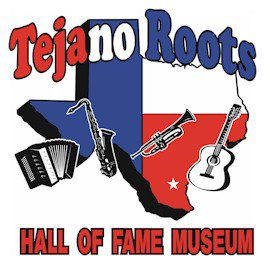
Texas State Tejano Music Hall of Fame
Tejano Music Hall of Fame Museum, Alice
In general, the term "tejano" refers to a Texan of Mexican heritage. Tejano music, then, is folk or popular music that comes out of Mexican-American communities in Texas.
Tejano ROOTS (Remembering Our Own Tejano Stars) was established on June 9, 1999 to honor and preserve Tejano music and culture.
The Tejano Music Hall of Fame honors and recognizes Tejano artists, musicians, composers and any other persons who have contributed to the awareness and entertainment of the Tejano culture by preserving the historical artifacts, documents and culture of the Tejano Music Industry.
On February 2, 2001, House Bill No. 1019, authored by Rep. Ignacio Salinas Jr., was read for the first time on the floor of the Texas House of Representatives.
It sought to honor the heritage of tejano music and bring attention to the efforts of Tejano ROOTS Hall of Fame Museum to preserve tejano music and culture.
The Tejano Music Hall of Fame, in Alice, Texas, became the official Texas Tejano Music Hall of Fame when Governor Rick Perry signed House Bill No. 1019 on May 3, 2001. The law became effective on September 1, 2001.
Texas Law
The following information was excerpted from the Texas Statutes Government Code, Title 11, Subtitle A, Chapter 3101, Section 3101.012.
GOVERNMENT CODE
TITLE 11. STATE SYMBOLS AND HONORS; PRESERVATION
SUBTITLE A. STATE SYMBOLS AND HONORS
CHAPTER 3101. STATE SYMBOLS
Sec. 3101.012.
Sec. 3101.012. TEJANO MUSIC HALL OF FAME. The Tejano Music Hall of Fame Museum in Alice is the official Texas Tejano Music Hall of Fame.
Added by Acts 2003, 78th Leg., ch. 1276, Sec. 9.022(a), eff. Sept. 1, 2003.
Sources...
The 2008 Texas Statutes. 2009. 3 April 2009
Shearer, Benjamin F. and Barbara S. State Names, Seals, Flags and Symbols: A Historical Guide Third Edition, Revised and Expanded. Westport, Conn: Greenwood Press, 3 Sub edition, 2001.
Additional Information
Tejano R.O.O.T.S. Hall of Fame and Museum: on Facebook.
Border Cultures: Conjunto Music: Craig Schroer - Electronic Services Librarian, Benson Latin American Collection, University of Texas at Austin.
Tejano Roots Hall of Fame Museum: Texas State Historical Association.
More symbols & emblems: Complete list of official Texas state symbols from NETSTATE.COM.
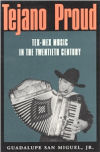
Tejano Proud
Guadalupe San Miguel Jr.
Tejano Proud: Tex-Mex Music in the Twentieth Century , by Guadalupe San Miguel Jr. 208 pages. Publisher: Texas A&M University Press (February 27, 2002)
From the dance halls to the main stage, from small town Texas to the big cities, and from treasured local cultural traditions to the national display of Mexican Texas' finest talent, música tejana is rapidly becoming known as a rich and vibrant form of American music. In Tejano Proud: Tex-Mex Music in the Twentieth Century, Guadalupe San Miguel, Jr., chronicles the many dimensions of this important musical form.
Rooted in Mexican culture and shaped by influences from the United States and the rest of the world, the diversity and complexity of this music give an expression to the people and the borderlands culture from which the music grew. San Miguel provides an engaging history of the evolution of música tejana—its ups and downs and its importance to Mexican Texas culture in the context of Anglo-Mexican relations. He also discusses the more recent development of the Tejano recording industry and the role women have begun to play in an industry long dominated by men.
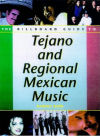
Billboard Guide
to Tejano and Regional
Mexican Music
Billboard Guide to Tejano and Regional Mexican Music by Ramiro Burr. 288 pages. Publisher: Billboard Books (May 1, 1999)
For the first time in history, there is a fact-based reference book of Latin music (Tejano and regional Mexican) with un-biased, critical biographies, artistic profiles and select discographies on more than 300 bands, including the major players: Lola Beltran, Pedro Infante, Luis Miguel, Little Joe, Selena, Los Tigres, Los Lobos, Linda Ronstadt, Vicente Fernandez.
The Guide includes a glossary of music terms and Spanish words, a chronology of historical events, and an insightful chapter on the history of Tejano music as well as Top 10 lists of the greatest CDs and songs in trio, mariachi, Tejano, norteno, etc.
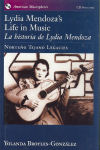
Lydia Mendoza's
Life in Music
Yolanda Broyles-Gonzalez
Lydia Mendoza's Life in Music: La Historia de Lydia Mendoza: Norteño Tejano Legacies, by Yolanda Broyles-Gonzalez. 235 pages. Publisher: Oxford University Press (January 1, 2003)
Lydia Mendoza began her legendary musical career as a child in the 1920s, singing for pennies and nickels on the streets of downtown San Antonio. She lived most of her adult life in Houston, Texas, where she was born.
The life story of this Chicana icon encompasses a 60-year singing career that began with the dawn of the recording industry in the 1920s and continued well into the 1980s, ceasing only after she suffered a devastating stroke. Her status as a working-class idol continues to this day, making her one of the most prominent and long-standing performers in the history of the recording industry and a champion of Chicana/o music.
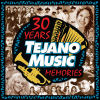
30 Years of
Tejano Music Memories
Various artists
30 Years of Tejano Music Memories, Audio CD (December 7, 2010). Label: EMI Latin.
"Bidi Bidi Bom Bom," Selena; "Como Le Hare," Emilio Navaira; "Amor Querido," Ramiro "Ram" Herrera; "Borracho De Besos," La Fiebre; "Pegadita," Stephanie Lynn & High Energy; "Cuatro Caminos," Laura Canales; "Las Miradas," Gary Hobbs; "Que Chulos Ojos," Lati Breed; "Sensaciones," Emilio Navaira; "Por Ella," Intocable; "Con Brazos Abiertos," Elsa Garcia; "Fijate," David Marez; "Senorita Cantinera," Roberto Pulido; "Si Tu Supieras," La Mafia; "No Te Olvidaré," Mazz.
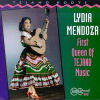
First Queen
of Tejano Music
Lydia Mendoza
First Queen of Tejano Music, Lydia Mendoza. Audio CD (April 2, 1996) Label: Arhoolie Records.
The roots of Tejano music evolved in the late forties and early fifties when South Texas clubs, dancehalls, and bars began featuring popular styles of Mexican-American music. Lydia was one of the most accomplished figures during this time, primarily as a singer who had already made a name for herself, recording with her family as early as 1928. This CD showcases Lydia performing with the best orquestas, conjuntos and trios that South Texas had to offer between 1952 and 1964.
Though Lydia Mendoza is best known for her strong resonant vocal ballads on 12 string guitar, she is featured here in the company of Narciso Martinez y Su Conjunto, Tony De La Rosa y Su Conjunto, and with the Beto Villa Orquesta, as well as being backed by trios and mariachis.

